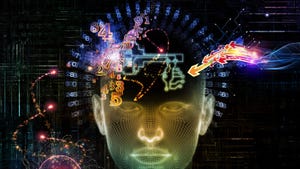How Carriers can Enable the ‘Giga Experience’ and Boost FTTH ARPUHow Carriers can Enable the ‘Giga Experience’ and Boost FTTH ARPU
“If more users are to enjoy a fast and smooth broadband experience, the migration from cable and DSL to optical ports needs to accelerate,” Feng Zhishan, president of Huawei’s optical access network product line, told Light Reading at the recent annual Ultra-Broadband Forum (UBBF) held in Istanbul, Türkiye.

Sponsored by Partner Content
Moreover, warns Feng, there is a world of difference between gigabit coverage and a true gigabit experience. Feng notes that households connected to FTTH over a GPON, which typically has 32 users sharing downlink and uplink bandwidth of up to 2.5Gbps and 1.25Gbps respectively, typically encounter video freezing.
“What’s missing right now for many operators is to guarantee the SLA [service level agreement] experience,” he says. “Many ‘giga users’ on packages of ‘up to’ 1Gbps download on GPON actually don’t get the giga experience.”
As a basis to enable the giga experience, says Feng, users will need a low and stable latency of a few microseconds, plus symmetrical downlink and uplink speeds of between 300Mbps and 1Gbps. Although users might receive less than 1Gbps on a GPON, it is still possible for them to have the giga experience, maintains Feng, if the right supporting technologies are in place.
One of them is microblocking, which comprises clever algorithms to overcome video freezing. Feng reports that carriers without microblocking would need to reduce the number users on a GPON to fewer than five to enable an equivalent smooth video experience – hardly an attractive option for carriers looking to maximize returns on their investment in full-fiber access networks.
FTTR and the path to ARPU uplift
Feng highlights revenue-generating drivers underpinning a successful FTTH business model. As carriers migrate from legacy cable and DSL to GPON, and then onto XGS-PON (theoretical symmetrical speeds of up to 10Gbps) before arriving at 50G PON, which can offer guarantees symmetrical speeds of 10Gbps and deterministic experiences, there is potential to charge extra for speedier home broadband packages.
The other ARPU uplift opportunity is fiber-to-the-room (FTTR), which Feng says enables a “giga experience” even when GPON is deployed as the ‘backhaul’. “With FTTR, carriers can guarantee high-performance and stable Wi-Fi throughout a building, including Wi-Fi Calling, something which is not possible with public Wi-Fi,” asserts Feng.
China Unicom is the keenest adopter of FTTR in China. China Unicom is successfully using FTTR to boost ARPU and derive more value from its smaller subscriber base, notes Feng.
The last one is add-on FTTR services – coupled with stringent SLAs – that go beyond connectivity, which Feng considers as potentially the most powerful way to boost ARPU.
He points to Wi-Fi CSI (Channel State Information) as a good example. Using a dedicated Wi-Fi channel integrated with FTTR routers – rather than relying on the flaky performance of public Wi-Fi – CSI can detect a change of location in people and objects. Use cases include security and sensing the whereabouts of people in buildings, and even sending alerts to family members when a vulnerable person has fallen to the floor. “The traditional way to detect people is cameras, but that raises privacy issues and is much more expensive than CSI,” says Feng.
Other add-on services include in-building and in-home Network-attached storage (NAS), a type of server dedicated to data storage and file sharing used by enterprises and households. Looking more to the future, Zishan flags 3D optical sensing as a useful application for the healthcare sector.
Tools for FTTH acceleration
To help both fixed and mobile operators to accelerate FTTH rollout (and enable fixed-mobile convergence in the process), Huawei has developed ‘AirPON’, a set of innovative technologies that can help carriers quickly deploy high-quality gigabit fiber broadband services
A key part of the AirPON portfolio is the Digital Quick ODN (DQ ODN) solution. ‘Digital’ refers to Huawei’s ‘Iris’ fiber technology, a technology breakthrough allowing carriers to remotely manage passive fiber components. This removes the need for physical site inspections and cuts O&M costs.
‘Quick’ comes courtesy of Huawei’s prefabricated fiber optic distribution network (ODN). Replacing less efficient fiber-splicing techniques to create connections to optical distribution boxes, this ‘plug-in’ approach can be rapidly deployed with minimal disruption to existing infrastructure.
“A fiber connection can be made in a second and dramatically improves deployment efficiencies", says Feng. “Our ‘digital’ management capabilities, through Iris fiber, is also an essential tool for carriers to combat churn. DQ ODN is a powerful combination of technologies to accelerate FTTH network construction and provide an end-to-end management solution.”
Read more about:
Vendor SpotlightsAbout the Author
You May Also Like










.png?width=300&auto=webp&quality=80&disable=upscale)


_1.jpg?width=300&auto=webp&quality=80&disable=upscale)